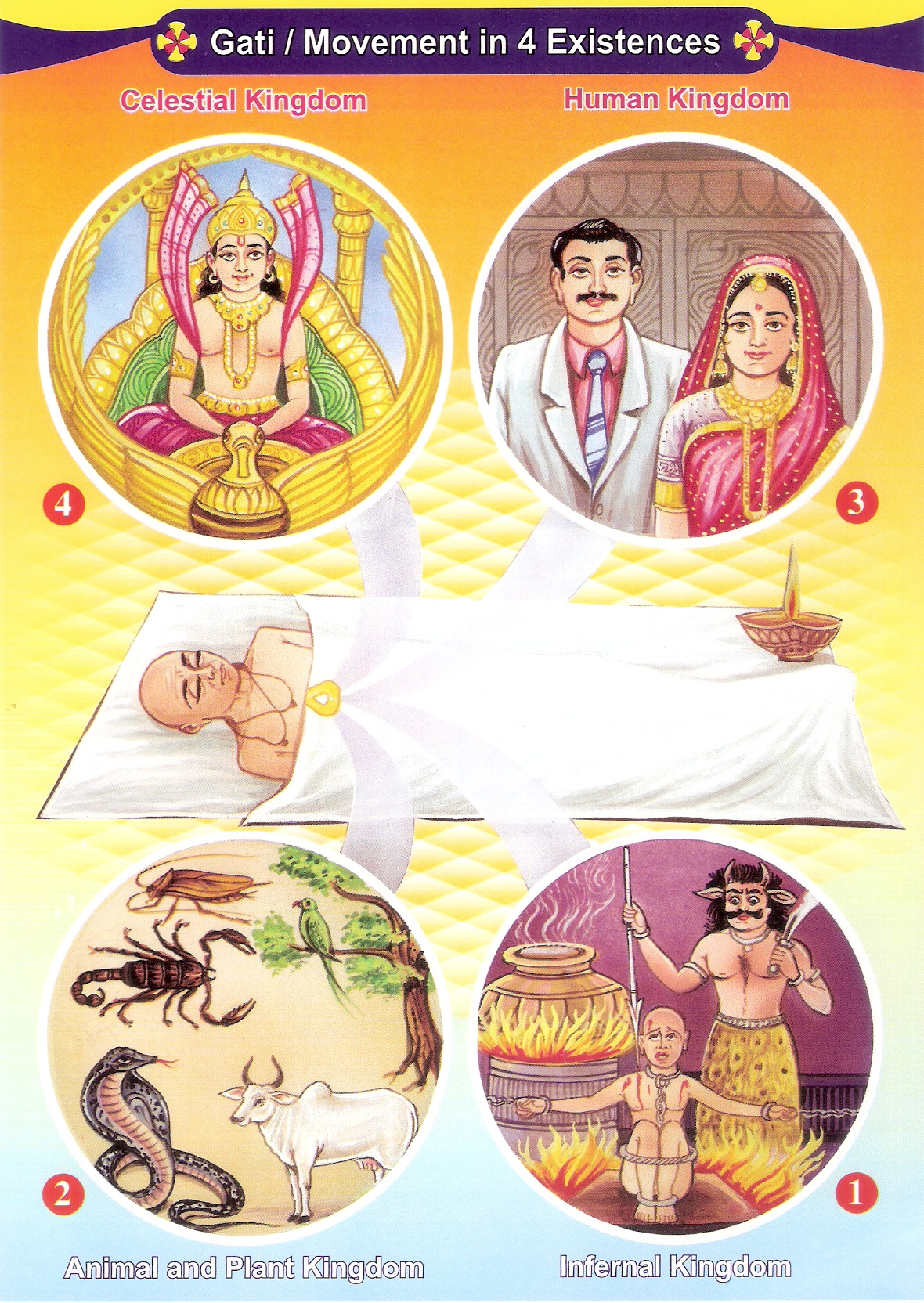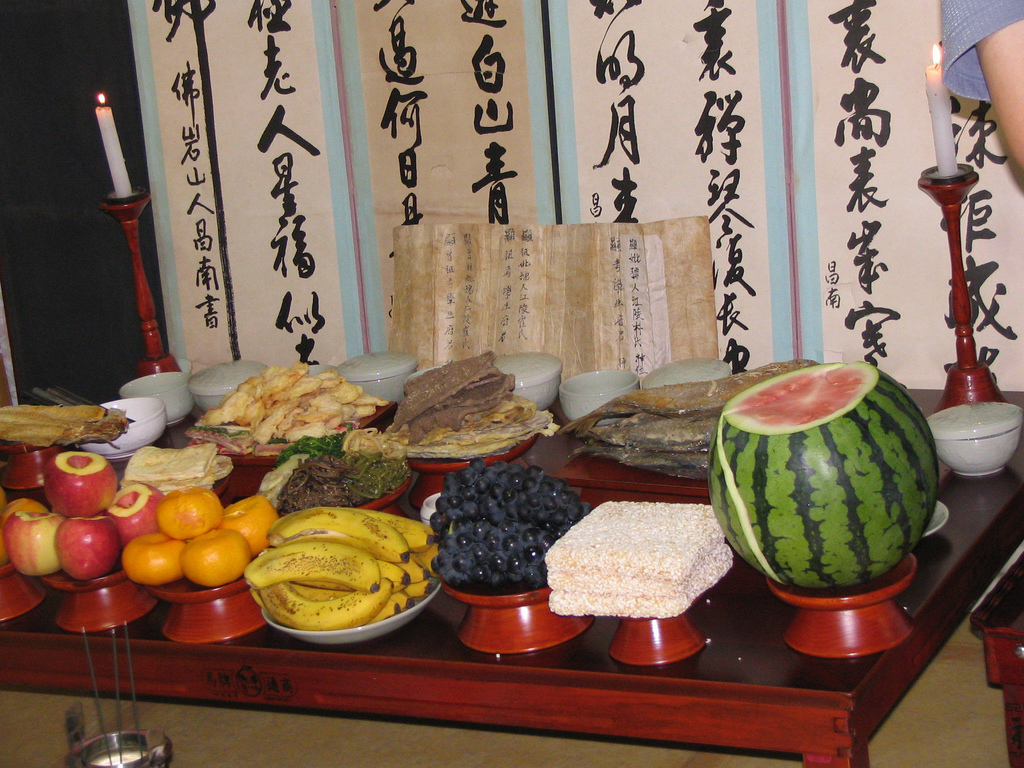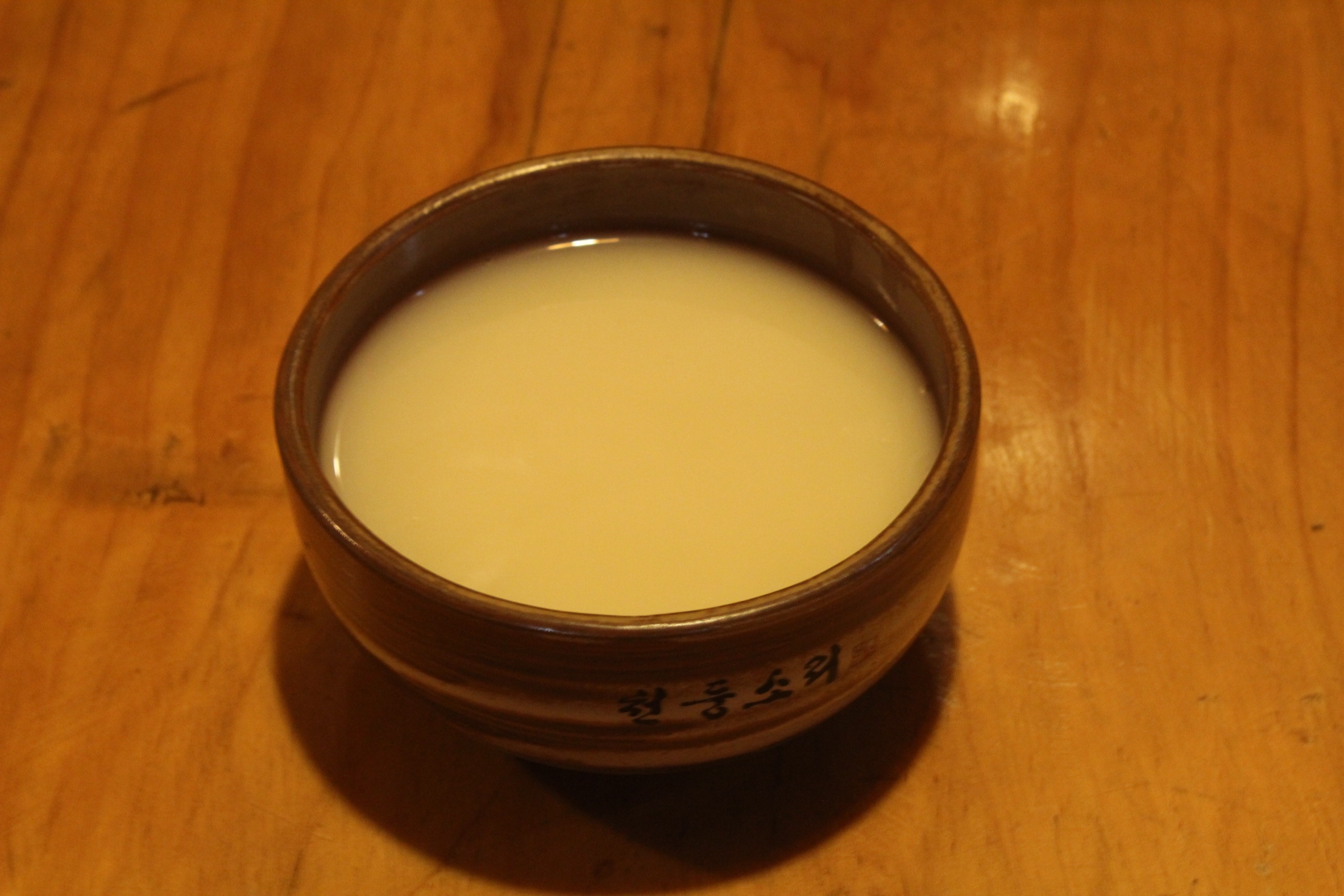|
Chasa Bon-puri
The ''Chasa Bonpuri'', known in other versions as the ''Chesa Bonpuri'' (1933 version) or the ''Cheseo Bonpuri'' (2006 and 2008 versions), is a Korean myth of Jeju Island. It is a myth that tells how Gangnim, the death god, came to be. As one of the best-known myths in the Korean peninsula, the ''Chasa Bonpuri'' is a characteristic hero epic. Etymology The term ''Chasa Bonpuri'' (차사 본풀이) means "Solving the origins of the death god"; modern academic circles synonymize "Bonpuli" with "myth". ''Chasa'' is the Standard Korean pronunciation of the Chinese word ''Chaishi'' (差使), meaning "messenger". In the Jeju language however, ''chaishi'' is pronounced ''Chesɒ'' or ''Cheshi'', leading to the different names per each version. Collections The Chasa Bonpuli has been directly collected from shamans nine times; below is a chart of these collections. Major plot Like all oral myths, there are multiple versions of the Chasa Bonpuli. The best-known version, introduc ... [...More Info...] [...Related Items...] OR: [Wikipedia] [Google] [Baidu] |
Korean Myth
Korean mythology ( ) is the group of myths told by historical and modern Koreans. There are two types: the written, literary mythology in traditional histories, mostly about the founding monarchs of various historical kingdoms, and the much larger and more diverse oral mythology, mostly narratives sung by shamans or priestesses (mansin) in rituals invoking the gods and which are still considered sacred today. The historicized state-foundation myths that represent the bulk of the literary mythology are preserved in Classical Chinese-language works such as ''Samguk sagi'' and ''Samguk yusa''. One state's foundation myth, that of Dan'gun, has come to be seen as the founding myth of the whole Korean nation. State-foundation myths are further divided into northern, such as that of the kingdom of Goguryeo and its founder Jumong, where the founder is the son of a celestial male figure and an earthly female figure, and southern, such as that of the kingdom of Silla and its founde ... [...More Info...] [...Related Items...] OR: [Wikipedia] [Google] [Baidu] |
Willow Tree
{{disambiguation ...
Willows are a genus of trees. Willow Tree may refer to: Places * Willow Tree, New South Wales, a village in Australia * Willow Tree railway station, in Australia * Willow Tree (LIRR station), a railway station in New York Entertainment * "Willow Tree", a 2020 song by Tash Sultana * ''The Willow Tree'' (novel), a 1998 novel by Hubert Selby, Jr. * ''The Willow Tree'' (2005 film), a 2005 Iranian film * ''The Willow Tree'' (1920 film), a 1920 American silent film * ''The Willow Tree'' (Rasputina album), a 2009 album * "The Willow Tree", an alternate name for the folk song "Bury Me Beneath the Willow" Other uses * Willow Tree (figurines), a line of figurines See also * * * Willow (other) A willow is any of the several hundred species of deciduous trees and shrubs in the genus ''Salix''. Willow or willows may also refer to: Places Australia * Willows, Queensland * Willow Tree, New South Wales * Willows Sports Complex, Townsvil ... [...More Info...] [...Related Items...] OR: [Wikipedia] [Google] [Baidu] |
Merchants
A merchant is a person who trades in commodities produced by other people, especially one who trades with foreign countries. Historically, a merchant is anyone who is involved in business or trade. Merchants have operated for as long as industry, commerce, and trade have existed. In 16th-century Europe, two different terms for merchants emerged: referred to local traders (such as bakers and grocers) and ( nl, koopman) referred to merchants who operated on a global stage, importing and exporting goods over vast distances and offering added-value services such as credit and finance. The status of the merchant has varied during different periods of history and among different societies. In modern times, the term ''merchant'' has occasionally been used to refer to a businessperson or someone undertaking activities (commercial or industrial) for the purpose of generating profit, cash flow, sales, and revenue using a combination of human, financial, intellectual and physical capital ... [...More Info...] [...Related Items...] OR: [Wikipedia] [Google] [Baidu] |
Human Body
The human body is the structure of a Human, human being. It is composed of many different types of Cell (biology), cells that together create Tissue (biology), tissues and subsequently organ systems. They ensure homeostasis and the life, viability of the human body. It comprises a human head, head, hair, neck, Trunk (anatomy), trunk (which includes the thorax and abdomen), arms and hands, human leg, legs and feet. The study of the human body involves anatomy, physiology, histology and embryology. The body anatomical variability, varies anatomically in known ways. Physiology focuses on the systems and organs of the human body and their functions. Many systems and mechanisms interact in order to maintain homeostasis, with safe levels of substances such as sugar and oxygen in the blood. The body is studied by health professionals, physiologists, anatomists, and by artists to assist them in their work. Composition The composition of the human body, human body is composed of ... [...More Info...] [...Related Items...] OR: [Wikipedia] [Google] [Baidu] |
Soul
In many religious and philosophical traditions, there is a belief that a soul is "the immaterial aspect or essence of a human being". Etymology The Modern English noun ''soul'' is derived from Old English ''sāwol, sāwel''. The earliest attestations reported in the ''Oxford English Dictionary'' are from the 8th century. In King Alfred's translation of ''De Consolatione Philosophiae'', it is used to refer to the immaterial, spiritual, or thinking aspect of a person, as contrasted with the person's physical body; in the Vespasian Psalter 77.50, it means "life" or "animate existence". The Old English word is cognate with other historical Germanic terms for the same idea, including Old Frisian ''sēle, sēl'' (which could also mean "salvation", or "solemn oath"), Gothic ''saiwala'', Old High German ''sēula, sēla'', Old Saxon ''sēola'', and Old Norse ''sāla''. Present-day cognates include Dutch ''ziel'' and German ''Seele''. Religious views In Judaism and in some Christian d ... [...More Info...] [...Related Items...] OR: [Wikipedia] [Google] [Baidu] |
Mosquitoes
Mosquitoes (or mosquitos) are members of a group of almost 3,600 species of small flies within the family Culicidae (from the Latin ''culex'' meaning "gnat"). The word "mosquito" (formed by ''mosca'' and diminutive ''-ito'') is Spanish for "little fly". Mosquitoes have a slender segmented body, one pair of wings, one pair of halteres, three pairs of long hair-like legs, and elongated mouthparts. The mosquito life cycle consists of egg, larva, pupa, and adult stages. Eggs are laid on the water surface; they hatch into motile larvae that feed on aquatic algae and organic material. These larvae are important food sources for many freshwater animals, such as dragonfly nymphs, many fish, and some birds such as ducks. The adult females of most species have tube-like mouthparts (called a proboscis) that can pierce the skin of a host and feed on blood, which contains protein and iron needed to produce eggs. Thousands of mosquito species feed on the blood of various hosts — v ... [...More Info...] [...Related Items...] OR: [Wikipedia] [Google] [Baidu] |
Reincarnation
Reincarnation, also known as rebirth or transmigration, is the philosophical or religious concept that the non-physical essence of a living being begins a new life in a different physical form or body after biological death. Resurrection is a similar process hypothesized by some religions, in which a soul comes back to life in the same body. In most beliefs involving reincarnation, the soul is seen as immortal and the only thing that becomes perishable is the body. Upon death, the soul becomes transmigrated into a new infant (or animal) to live again. The term transmigration means passing of soul from one body to another after death. Reincarnation (''Punarjanma'') is a central tenet of the Indian religions such as Buddhism, Hinduism, Jainism, and Sikhism; as well as certain Paganist religious groups, although there are Hindu and Buddhist groups who do not believe in reincarnation, instead believing in an afterlife. In various forms, it occurs as an esoteric belief in many s ... [...More Info...] [...Related Items...] OR: [Wikipedia] [Google] [Baidu] |
Coffins
A coffin is a funerary box used for viewing or keeping a corpse, either for burial or cremation. Sometimes referred to as a casket, any box in which the dead are buried is a coffin, and while a casket was originally regarded as a box for jewelry, use of the word "casket" in this sense began as a euphemism introduced by the undertaker's trade. A distinction is commonly drawn between "coffins" and "caskets", using "coffin" to refer to a tapered hexagonal or octagonal (also considered to be anthropoidal in shape) box and "casket" to refer to a rectangular box, often with a split lid used for viewing the deceased as seen in the picture. Receptacles for cremated and cremulated human ashes (sometimes called cremains) are called urns. Etymology First attested in English in 1380, the word ''coffin'' derives from the Old French , from Latin , which means ''basket'', which is the latinisation of the Greek κόφινος (''kophinos''), ''basket''. The earliest attested form of the word ... [...More Info...] [...Related Items...] OR: [Wikipedia] [Google] [Baidu] |
Jesa
Jesa (, ) is a ceremony commonly practiced in the East Asian cultural sphere. Jesa functions as a memorial to the ancestors of the participants. Jesa are usually held on the anniversary of the ancestor's death. The majority of Catholics, Buddhists and nonbelievers practice ancestral rites, although Protestants do not. The Catholic ban on ancestral rituals was lifted in 1939, when Pope Pius XII formally recognized ancestral rites as a civil practice (see Chinese Rites controversy). Many Korean Christians, particularly Protestants, no longer practice this rite. Christians generally, and Muslims avoid the rites, and many emigrants avoid the rites Since their origins, Jesa has taken on a certain formality as human civilization has developed, which is sometimes called rituals in Confucianism . Origins in Ancient China Jesa, 祭祀 (corresponding to English: sacrifice (祭), ritual (祀); ) evolved from the ancient Chinese ''sacrifice'' ritual, which refers to the use of strin ... [...More Info...] [...Related Items...] OR: [Wikipedia] [Google] [Baidu] |
Korean Wine
Korean cuisine has a wide variety of traditional alcoholic drinks, known as ''sul'' (). Many of these drinks end with the Sino-Korean word ''-ju'' (), and some end with the native Korean word ''-sul''. The Sino-Korean ''-ju'' is not used as an independent noun. There are an estimated 1,000 or more kinds of alcoholic drinks in Korea. Most are made from rice, and are fermented with the aid of yeast and ''nuruk'' (a wheat-based source of the enzyme amylase). Fruits, flowers, herbs, and other natural ingredients have also been used to craft traditional Korean alcoholic drinks. There are six distinct flavors: sweet, sour, pungent, roasted, bitter, and spicy. When the flavors are balanced, the alcohol is considered of good quality. Etymology There are several hypotheses regarding the origin of the word Sul, for one it is thought to have come from Chinese characters or Su-eul meaning Korean milk porridge (Korean word Tarakjuk). It can be understood that Sul must have derived from the ... [...More Info...] [...Related Items...] OR: [Wikipedia] [Google] [Baidu] |
Chain
A chain is a serial assembly of connected pieces, called links, typically made of metal, with an overall character similar to that of a rope in that it is flexible and curved in compression but linear, rigid, and load-bearing in tension. A chain may consist of two or more links. Chains can be classified by their design, which can be dictated by their use: * Those designed for lifting, such as when used with a hoist; for pulling; or for securing, such as with a bicycle lock, have links that are torus shaped, which make the chain flexible in two dimensions (the fixed third dimension being a chain's length). Small chains serving as jewellery are a mostly decorative analogue of such types. * Those designed for transferring power in machines have links designed to mesh with the teeth of the sprockets of the machine, and are flexible in only one dimension. They are known as roller chains, though there are also non-roller chains such as block chains. Two distinct chains can be co ... [...More Info...] [...Related Items...] OR: [Wikipedia] [Google] [Baidu] |
Korean Dragon
Korean dragons are legendary creatures in Korean mythology and folklore. The appearance of the dragon reflects its relation to its East Asian counterparts, including the Chinese dragons. Korean dragons Whereas most dragons in European mythology are linked to the elements of fire and destruction, dragons in Korean mythology are primarily benevolent beings related to water and agriculture, often considered bringers of rain and clouds. Hence, many Korean dragons are said to have resided in rivers, lakes, oceans, or even deep mountain ponds. The symbol of the dragon has been used extensively in Korean culture, both in Korean mythology and ancient Korean art. Ancient texts sometimes mention sentient ''speaking'' dragons, capable of understanding complex emotions such as devotion, kindness, and gratitude. One particular Korean legend speaks of the great King Munmu, who on his deathbed wished to become a " Dragon of the East Sea in order to protect Korea". The Korean dragon is in many ... [...More Info...] [...Related Items...] OR: [Wikipedia] [Google] [Baidu] |









